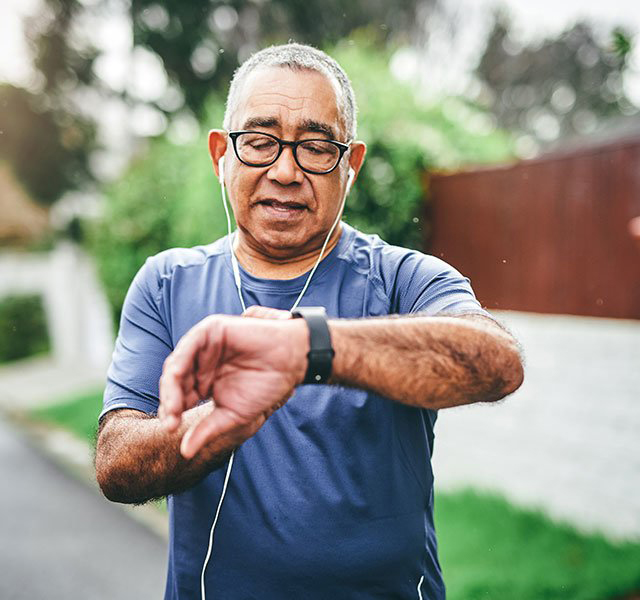Big muscles. Slim figure. Fast runner. Pretzel-like flexibility. Endless endurance. Depending on who you ask, any of those phrases could be used to describe — or define — what it means to be “in shape.”
But how do you know if you’re in good shape? Unfortunately, there is no one standard of fitness. Signs that you’re in good shape are going to vary for different people, depending on their body type, age and fitness goals.
How To Know If You’re Physically Fit
If you’re being honest with yourself, you probably already know the answer to the question, “How fit are you?” On a basic level, being fit means having a body that’s able to easily, safely and comfortably perform everyday functions. When you’re moving well without aches and pains and have stability and balance, that is a sign of fitness.
Your measure of fitness also depends on what sort of activity you like to do. A sprinter aiming for their fastest 100-meter dash and an ultra-runner training for a 100-mile race are both incredibly fit. But while one will measure fitness success by their speed, the other measures it by their endurance.
What isn’t necessarily a sign of fitness? What you see in the mirror. People get hung up on appearance, but you don’t need six-pack abs to be fit.
Even your weight isn’t always a good indicator of your fitness. In some cases, losing weight can improve your mobility and your body’s ability to perform at its best. But focusing just on a “goal weight” as a sign you’ve achieved your fitness goal can be deceptive. Physiologic changes are occurring as you build fitness that may alter what you see on the scale. So, if you’re busy building strength, the number on the scale may not reflect your fitness.
Tips For Getting In Shape
No matter how you define being “in shape,” you need a plan in order to work toward that goal. It helps to track your progress and have some sort of metric to say ‘I am getting more fit'.
If you’re trying to gain strength, track how many repetitions of a move — like pushups, sit-ups or squats — you can do in a minute. Every few weeks, test yourself again to see your improvement. You can do the same thing in the weight room by incrementally increasing the amount of weight you’re able to lift while still maintaining good form.
If you’re trying to build endurance, work up slowly to your goal mileage — increasing it gradually each week. You’ll also know you’re getting more fit if you can hold a faster pace for a longer time or the run you’ve always done suddenly feels easier.
Other tips for achieving your personal fitness goals include:
- Start small: If you try to do too much, too fast, you may not make it to your goal any quicker. In fact, you’re more likely to get injured or burn out and quit altogether.
- Be realistic: Think about what it’ll take to achieve your fitness goal and then take a look at how you’ll fit it into your schedule and lifestyle. Telling yourself you have to work out every day for a full hour may mean that you skip it most days. Better to aim for just 20 minutes a day if that’s what you realistically have time for.
- Mix it up: Nothing derails your fitness goals faster than boredom. Vary your workouts as much as possible to help keep exercise interesting.
- Stay accountable: Having a workout buddy can help you stay motivated (and keep you from hitting the snooze button when you have an early morning workout scheduled). Even when you aren’t meeting a friend, put your workouts on your calendar. Hold yourself accountable just as you would for any other meeting or appointment on your schedule.
- Don’t forget to rest: Your muscles need days off to recuperate and rebuild.
To find an athletic trainer at Henry Ford, visit henryford.com or call 1-800-436-7936.
Nick Parkinson, M.Ed., AT, ATC, TSAC-F Supervisor of Athletic Training with Henry Ford Sports Medicine, also leads Sports Performance training at the William Clay Ford Center for Athletic Medicine. Learn more about Nick.



